
Roots
The coil, the kink, the curl – a language spoken across continents and through centuries, bearing witness to lives lived, resilience hardened, and beauty asserted. For those of African descent, the strands emerging from the scalp are more than mere biological filaments. They stand as vibrant conduits to ancestry, a living archive of collective memory and fortitude.
This exploration will trace the journey of textured hair, examining its fundamental existence through a lens of profound Heritage, acknowledging that every curve and twist carries echoes of ancient practices and enduring identities. The conversation about hair in Black identity begins at this deeply personal, yet universally shared, source.

Anatomy of a Heritage Strand
The unique physical properties of Afro-textured hair distinguish it from other hair types, reflecting a remarkable adaptation over millennia. Unlike the more circular cross-sections of straight hair, Afro-textured strands exhibit an elliptical shape. This distinct form, coupled with the retro-curvature of the hair follicle itself—an asymmetrical, S-shaped path beneath the scalp—causes the hair to grow in tight spirals and coils. This structural difference means sebum, the natural oil produced by the scalp, struggles to travel down the entire length of the hair shaft, contributing to dryness.
The hair fiber itself contains three types of cortical cells—orthocortical, paracortical, and mesocortical. The distribution of these layers differs in textured hair, contributing to its spring-like shape. Moreover, Afro hair has a higher density of disulfide bonds, those sulfur molecules that provide strength and shape to the hair’s keratin proteins.
These characteristics explain why Afro-textured hair, while not inherently weaker, is more vulnerable to mechanical stress and breakage compared to straight hair types. A profound understanding of these biological distinctions informs how ancestral care practices emerged, designed to address the specific needs of these coils and maintain their vitality.
The very architecture of a textured strand holds within its coils the echoes of generations, a living testament to ancestral lineages.
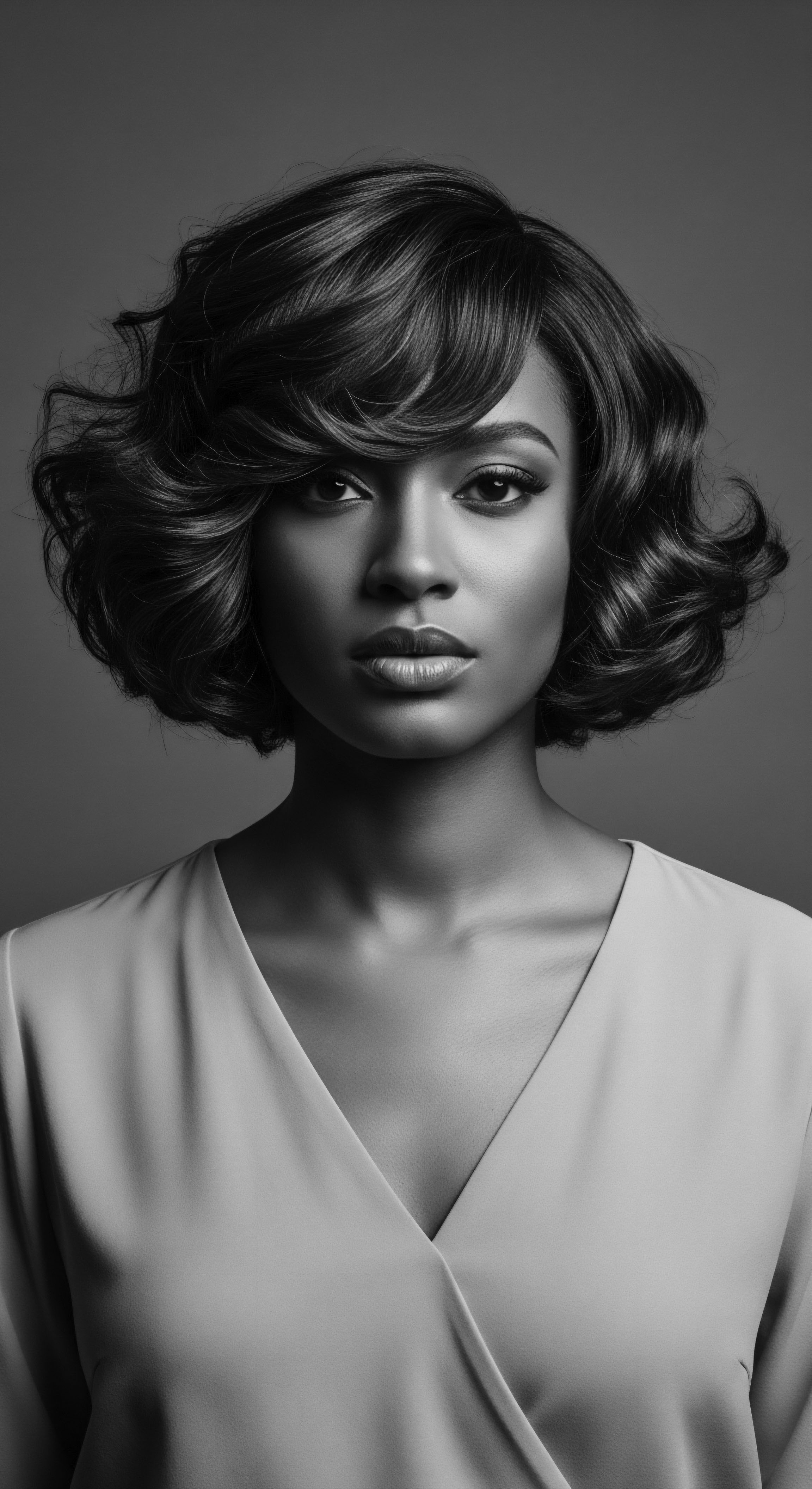
Naming the Textures of Time
The language used to describe hair textures has evolved, often carrying the weight of historical biases. Modern classification systems, such as the widely adopted numerical and alphabetical scale (Type 1-4, with subtypes a, b, c), provide a framework for understanding curl patterns. Type 4 hair, characterized by its tight coils and kinky appearance, encompasses a wide spectrum of textures within the Afro-textured hair family. However, these classifications, while useful for product formulation and communication, sometimes struggle to fully represent the vast Diversity and variability present across genetically distinct groups.
Ancestral societies often used hair as a visible marker of identity, status, and community affiliation. The descriptions of hair were therefore often tied to these social meanings, rather than purely physical attributes. In pre-colonial West Africa, for example, specific hairstyles communicated age, marital status, religion, wealth, and social rank. The language of hair was deeply embedded in social structures, a visual dialect understood by all.
One might ask, how did ancestral societies classify hair without modern scientific scales?
Their lexicon was practical and communal. Terms likely centered on the behavior of the hair, its density, its ability to hold styles, or its appearance under different conditions. The very act of hair dressing was a social activity, a shared experience where understanding and appreciation of hair’s unique qualities were passed down, becoming intrinsic knowledge rather than formal classification.
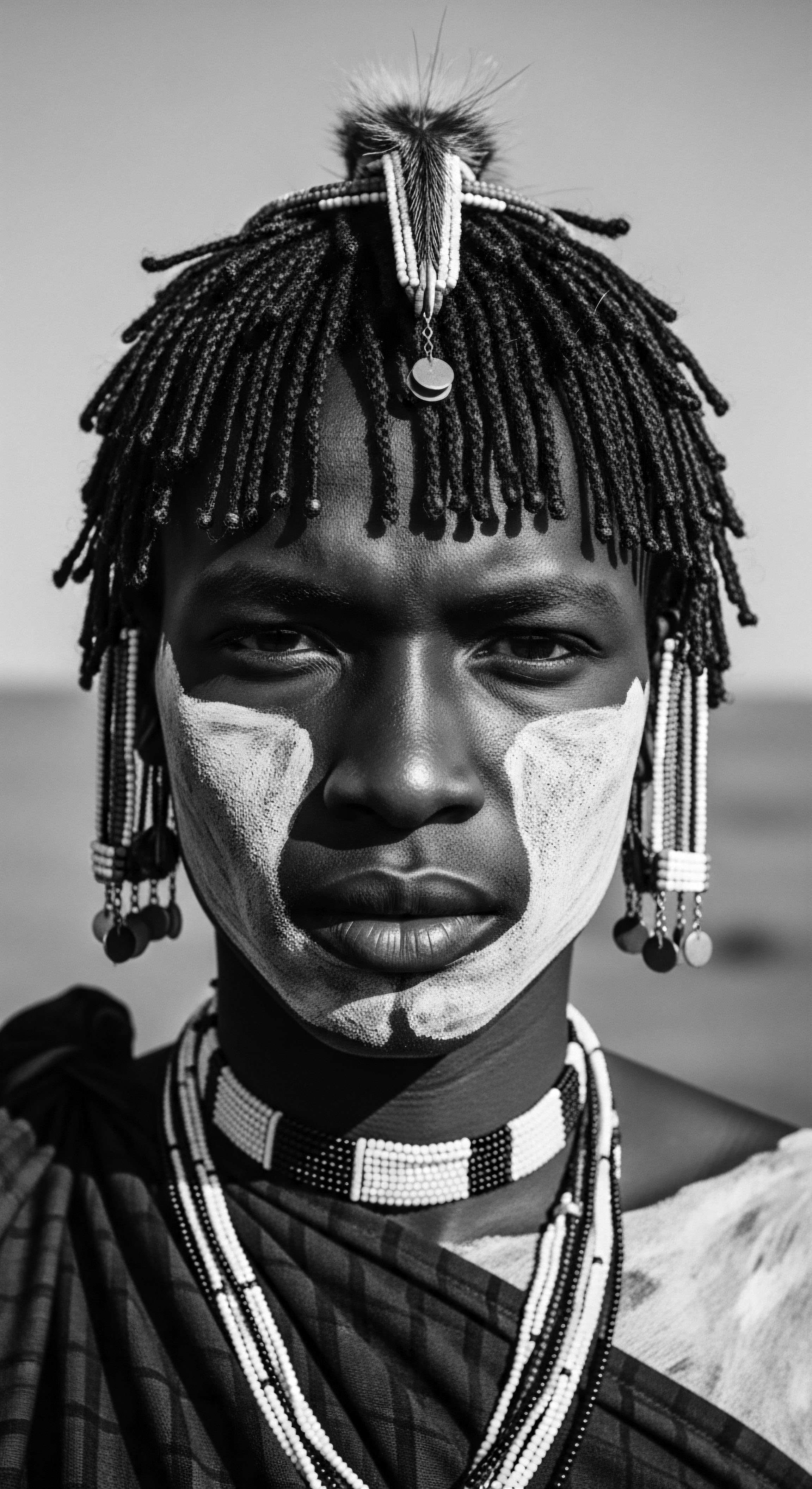
The Cycles of Life and Hair Through Heritage
Hair growth follows distinct cycles ❉ anagen (growth), catagen (transition), and telogen (rest). For Afro-textured hair, the anagen phase, the period of active growth, can be shorter compared to other hair types. This, combined with the hair’s curved growth pattern and tendency for shrinkage, means that visible length retention often presents a unique consideration for individuals with textured hair.
Historically, environmental factors and nutritional practices played a profound role in hair health. Traditional African diets, rich in nutrient-dense foods, would have supported healthy hair growth. The use of natural ingredients like shea butter and various plant oils, common in ancestral hair care, speaks to an intuitive understanding of the hair’s needs for moisture and protection in diverse climates. These practices underscore a deep-seated connection to the land and its resources, a testament to how generations adapted their care rituals to their immediate surroundings, ensuring the vitality of their strands through the ages.
| Aspect Hair Follicle Shape |
| Ancestral Context Observed through hair behavior, influencing styling and communal practices. Likely associated with cultural meanings of hair type. |
| Modern Scientific View Elliptical and curved, contributing to tight coils and an S-shaped path below the scalp. |
| Aspect Sebum Distribution |
| Ancestral Context Addressed by traditional oils and butters, indicating an understanding of hair's moisture needs. |
| Modern Scientific View Limited travel along tightly coiled strands, resulting in drier hair. |
| Aspect Growth Rate Perception |
| Ancestral Context Understood through generations of observation; styles often accounted for visible length. |
| Modern Scientific View Afro-textured hair grows at a slower rate than Caucasian hair, approximately 256 micrometers per day compared to 396 micrometers per day. |
| Aspect This table highlights how age-old observations and responses to hair's natural tendencies find validation in contemporary scientific study, reinforcing the enduring wisdom within textured hair heritage. |
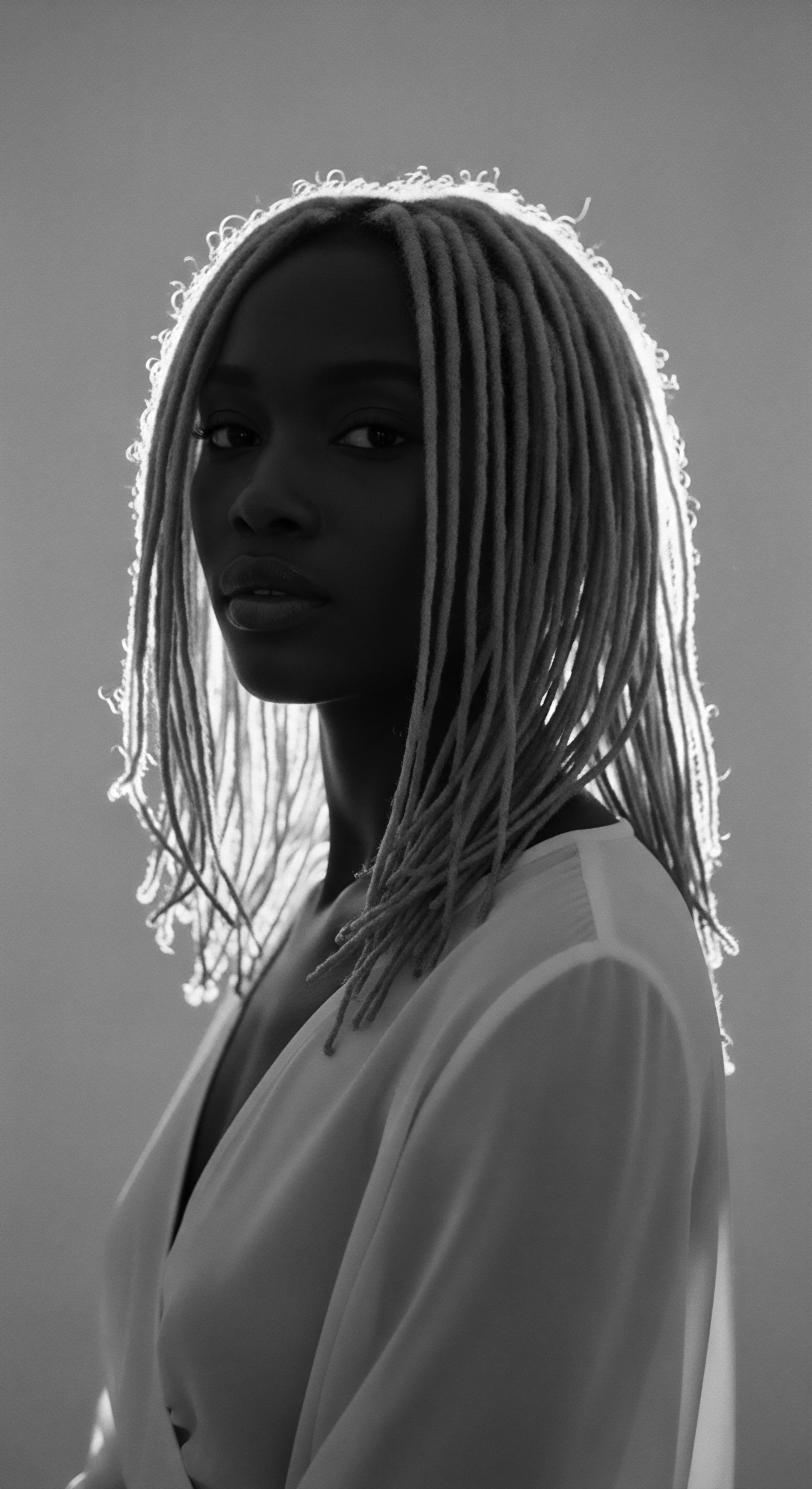
Ritual
The manipulation of textured hair, through braiding, twisting, coiling, and adornment, is a practice imbued with a long lineage of cultural significance. These rituals are not simply about aesthetics; they are acts of preservation, communication, and self-definition, deeply rooted in a shared Heritage that spans millennia. From the communal bonding sessions of pre-colonial African societies to the defiant artistry expressed under oppressive regimes, hair styling has always been a powerful medium for storytelling and identity.
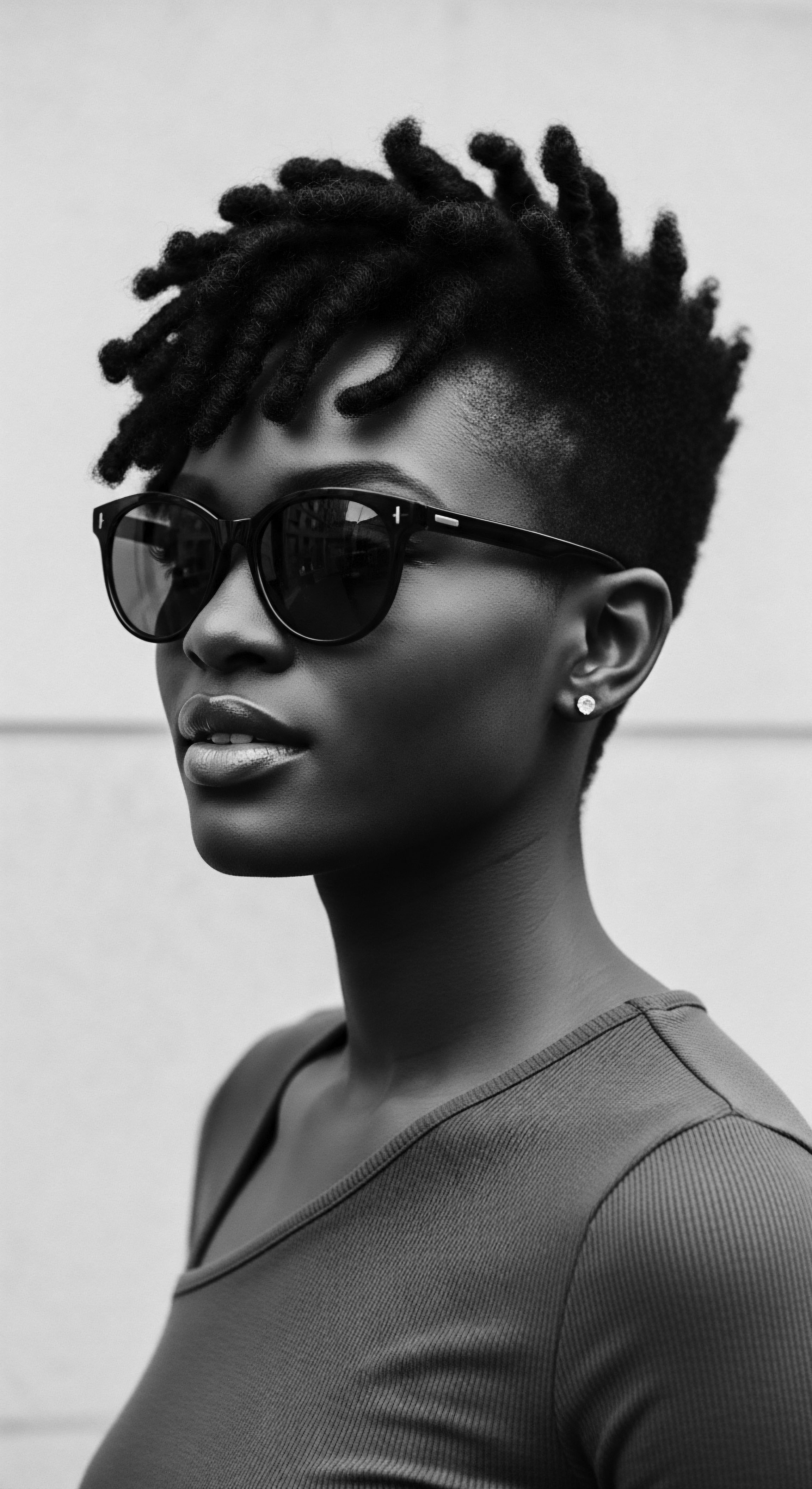
Protective Styling Through the Ages
Protective styles, a cornerstone of textured hair care, possess origins that stretch back thousands of years into African civilizations. Styles such as Cornrows, Box Braids, and Locs were not only practical for managing hair but also served as profound cultural markers. In many traditional African societies, these intricate patterns communicated a person’s age, marital status, social rank, and even their tribal or ethnic background. The creation of such styles often involved hours, even days, a communal activity that strengthened bonds within families and communities.
The Transatlantic Slave Trade brought an unimaginable rupture, yet the practice of protective styling persisted as a form of resistance and survival. Enslaved African women, stripped of their homelands and identities, braided seeds and grains into their hair, ensuring a source of food for survival during journeys or after escape. Cornrows became covert maps, with specific patterns guiding escape routes and communicating messages among those seeking freedom. This historical example, recounted by scholars like Jazmin Brooks (2020), speaks to the profound ingenuity and survival instinct ingrained within these practices.
- Cornrows ❉ Ancient patterns originating from Africa, serving as identifiers of tribal affiliation, social status, and later, as covert maps during enslavement.
- Bantu Knots ❉ Traced back to the Bantu-speaking communities, historically used for identification of subgroups and as a protective coiling method.
- Locs ❉ Styles found in various African cultures for millennia, often symbolizing spiritual connection, social status, or commitment.

Traditional Natural Styling and Definition
Beyond protective styles, traditional African societies employed various methods to define and adorn natural hair, honoring its intrinsic beauty. Techniques such as African Hair Threading, known as “Irun Kiko” among the Yoruba people of Nigeria, have existed since the 15th century. This method involves wrapping strands of hair tightly with thread, stretching and elongating the coils, which also serves to retain length and protect against breakage. It was a means of achieving diverse shapes and was often embellished with cowrie shells or beads, which denoted social class or personal style.
Such practices highlight a deep attunement to the hair’s natural tendencies, working with its texture rather than against it. The communal aspect of these styling sessions provided an important space for sharing traditional knowledge, strengthening familial ties, and reinforcing cultural norms. These were not solitary acts but communal expressions of care and artistry.
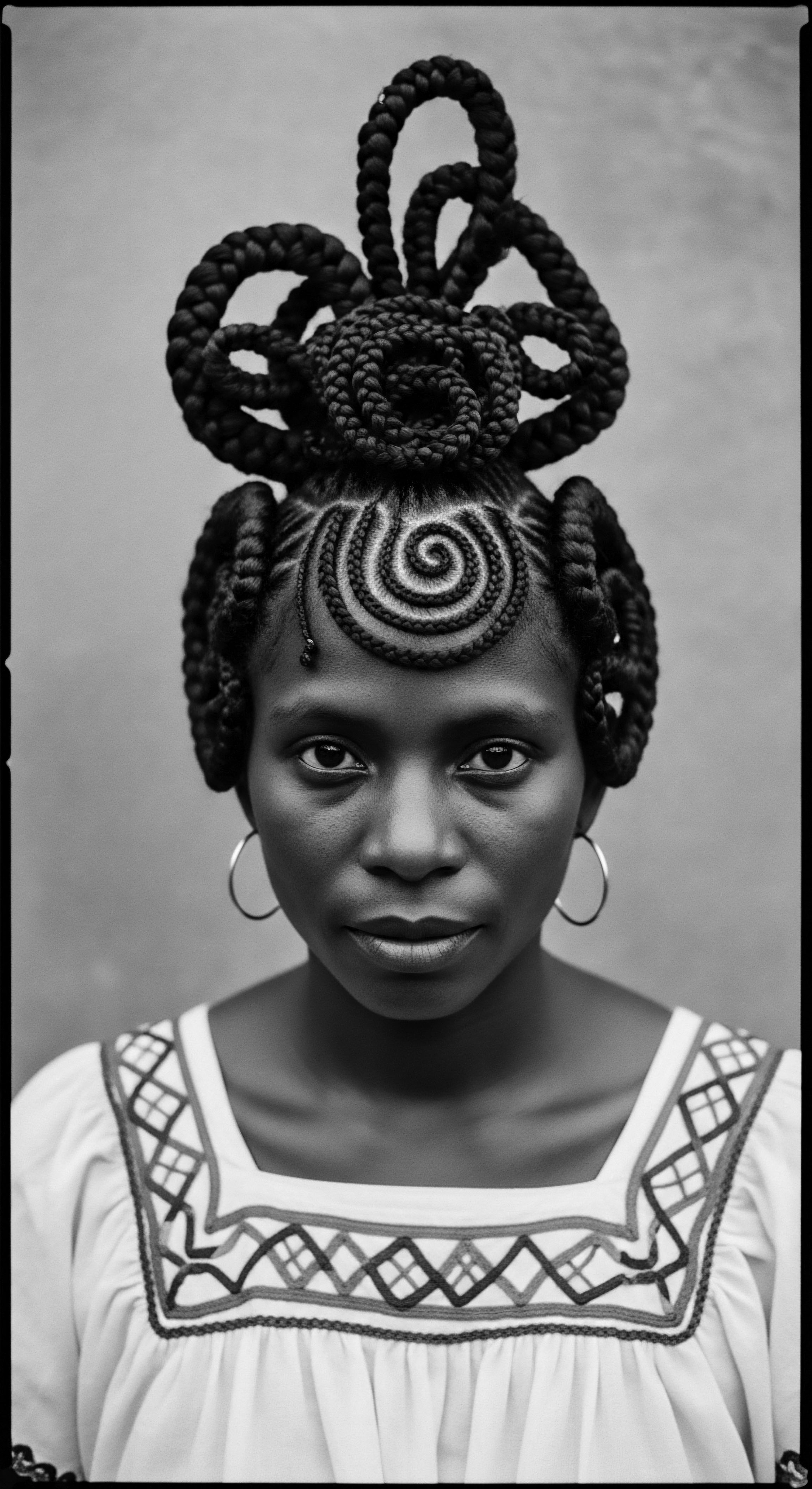
The Legacy of Wigs and Hair Extensions
The use of wigs and hair extensions, while often associated with modern trends, also has a long and complex lineage within Black and mixed-race communities, connecting to ancient practices. In ancient Egypt, pharaohs and other members of society wore elaborate wigs, signifying royal status and divine power. These historical adornments set a precedent for hair as a symbol of status and identity, a concept that resonated through the diaspora.
During the era of enslavement and its aftermath, wigs and extensions became adaptations, sometimes allowing individuals to conform to Eurocentric beauty standards imposed by oppressive systems, thereby gaining a semblance of social acceptance or employment opportunities. However, this adoption also carried layers of complexity, reflecting societal pressures alongside the ongoing desire for self-expression and the reclamation of beauty on one’s own terms. The history of wigs among Black women illustrates a constant negotiation between external pressures and the internal will to define one’s own aesthetic, often rooted in a desire to survive and thrive.

Tools of the Ancestors and Today
The toolkit for textured hair care has evolved, yet many traditional instruments and the principles behind their use remain relevant. In pre-colonial Africa, combs were crafted from wood or bone, designed to navigate the unique structure of coiled hair. These tools were not merely functional; they were often artistic objects, imbued with cultural significance.
Consider the shift in available resources during forced migration. Enslaved Africans, without access to traditional herbal treatments, oils, and combs, improvised with what they could find. This included using bacon grease, butter, or even kerosene as conditioners, and sheep fleece carding tools as combs. These desperate adaptations underscore the deep-seated impulse to care for hair, even under the most brutal conditions, preserving a connection to self and ancestral practices through whatever means possible.
Today, the toolkit has expanded to include a wide range of specialized brushes, wide-tooth combs, and styling implements. Yet, the foundational understanding of how to gently detangle, stretch, and define coils, a wisdom passed down through generations, continues to guide contemporary practices.
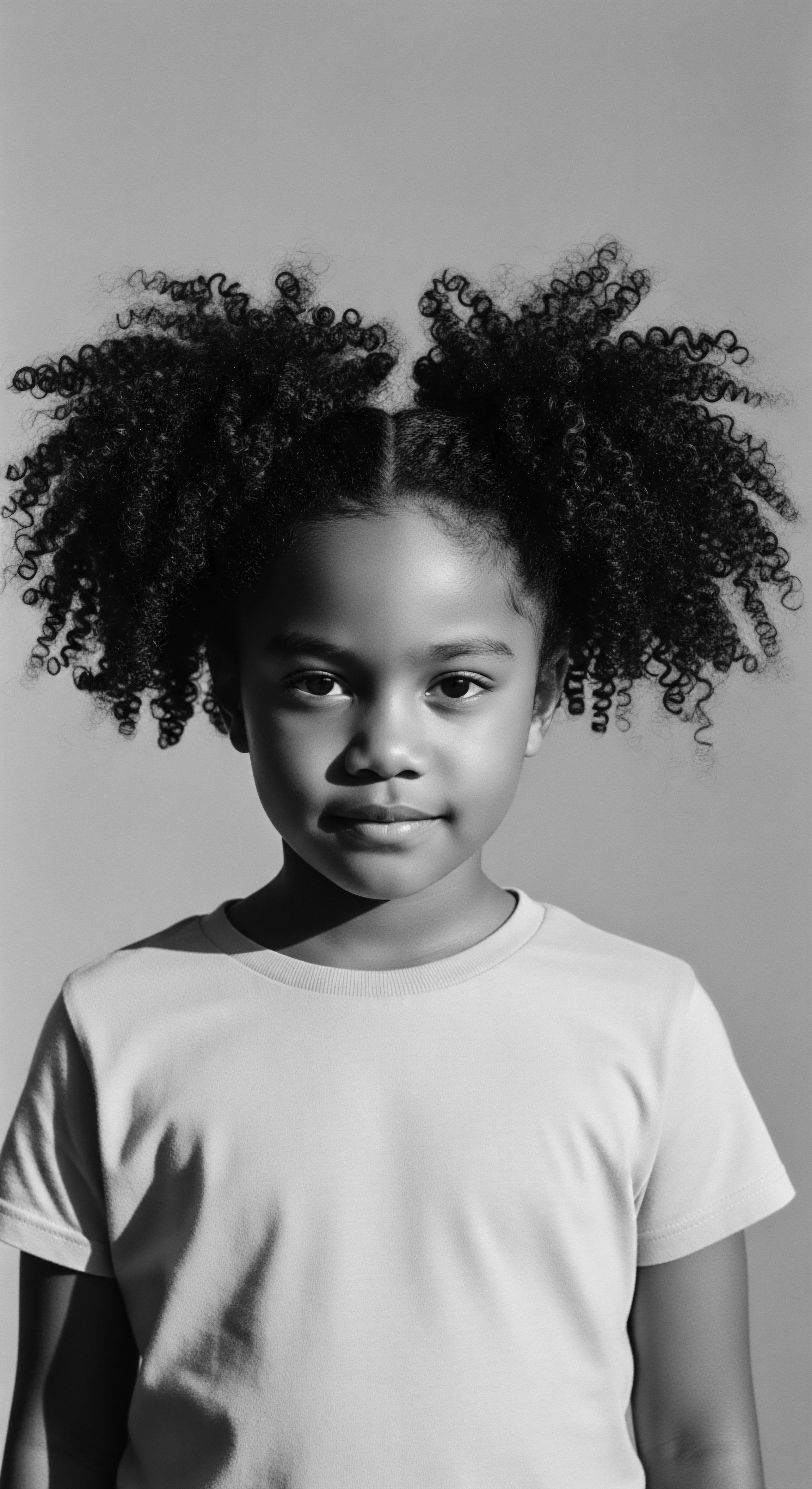
Relay
The dialogue surrounding textured hair is a continuous relay, a transfer of knowledge from the past to the present, shaping aspirations for the future. This segment delves into the complexities of holistic care, nighttime practices, and problem-solving, all viewed through the profound lens of Heritage. It acknowledges that modern scientific understanding frequently echoes, and sometimes validates, the intuitive wisdom passed down through generations within Black and mixed-race communities.

Holistic Care for Textured Strands
The concept of holistic care for textured hair is deeply intertwined with ancestral wellness philosophies. For centuries, African communities instinctively understood the connection between internal wellbeing and the external vitality of hair. Traditional hair care routines were communal activities, often involving the use of natural ingredients sourced from the earth. These practices aligned hair care with overall health, recognizing that nourished bodies contribute to flourishing strands.
A significant challenge for Afro-textured hair lies in its inherent dryness, a direct result of its unique follicular structure which hinders natural sebum distribution along the coil. This biological reality historically informed the extensive use of moisturizing agents like Shea Butter, Coconut Oil, and various plant-based oils and butters in traditional African hair care. These natural remedies were applied not just for shine but for deep conditioning and protection, reflecting an intuitive scientific understanding.
Ancestral wisdom concerning hair wellness often predated formal scientific inquiry, offering profound insights into natural rhythms and restorative practices.
Modern scientific studies now confirm the benefits of these natural emollients for moisturizing and protecting textured hair, validating practices that have endured for generations. The approach to building personalized hair regimens today can draw rich inspiration from this ancestral wisdom, blending time-tested methods with contemporary scientific knowledge for truly optimal care.

The Nighttime Sanctuary and Bonnet Wisdom
The ritual of protecting hair during sleep, especially with accessories like bonnets, is a practice deeply embedded in the contemporary care regimens of many Black women. This seemingly simple act possesses a profound lineage, reflecting both practical necessity and a heritage of self-preservation. In the context of brutal labor during enslavement, covering hair at night likely served a dual purpose ❉ maintaining cleanliness and minimizing tangles for ease of management during arduous days.
As freedom arrived, the bonnet evolved, becoming a symbol of self-care and a means of preserving intricate hairstyles. It ensured that the time and effort invested in styling were not undone by sleep, contributing to the longevity of hair-dos and reducing the need for frequent manipulation, which can lead to breakage. This practice, often seen as a private ritual, underscores the resourcefulness and the enduring dedication to hair health within the community. The bonnet, therefore, is not merely a piece of fabric; it is a quiet testament to a legacy of adaptive care and profound respect for textured hair.
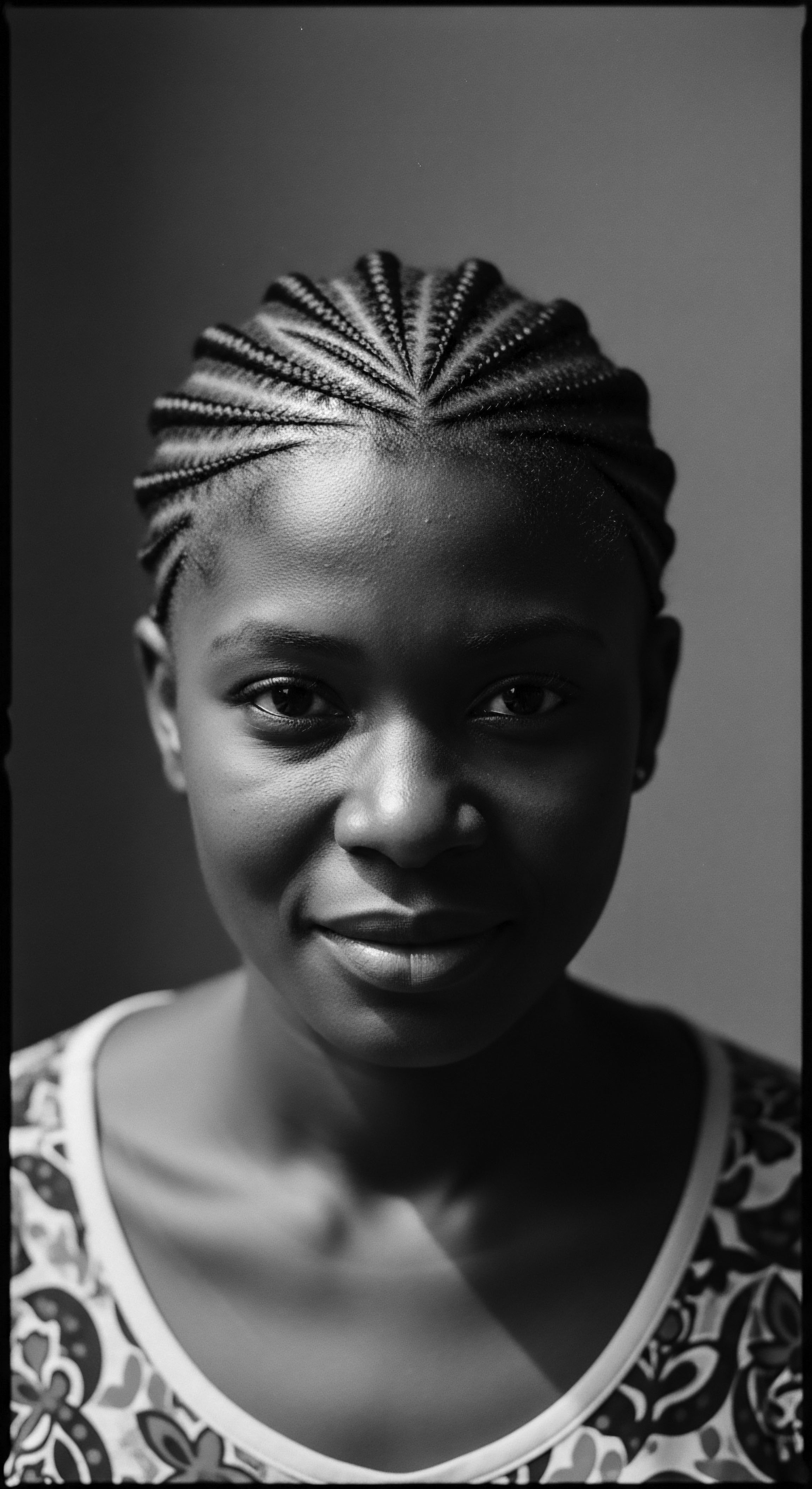
Traditional Ingredients and Modern Equivalents
The landscape of ingredients for textured hair care has expanded dramatically, yet many contemporary products feature components whose benefits were understood and utilized by ancestral communities. This continuum highlights a scientific wisdom embedded in historical practices.
| Traditional Ingredient (Ancestral Use) Shea Butter (West Africa) |
| Modern Application (Scientific Understanding) Deeply moisturizing, protective barrier, used for softness and pliability. |
| Emollient, rich in fatty acids, seals moisture into the hair shaft, reduces frizz. |
| Traditional Ingredient (Ancestral Use) Coconut Oil (Various regions) |
| Modern Application (Scientific Understanding) Used for conditioning, detangling, and shine. |
| Penetrates the hair shaft to reduce protein loss, provides lubrication, and enhances shine. |
| Traditional Ingredient (Ancestral Use) Aloe Vera (Various regions) |
| Modern Application (Scientific Understanding) Applied for soothing scalps, conditioning hair, and promoting health. |
| Anti-inflammatory properties for scalp health, provides light moisture, and aids in detangling. |
| Traditional Ingredient (Ancestral Use) Chebe Powder (Chad) |
| Modern Application (Scientific Understanding) Promotes length retention by strengthening hair and reducing breakage. |
| Contains compounds that strengthen the hair fiber and may reduce hygral fatigue, supporting length retention. |
| Traditional Ingredient (Ancestral Use) The enduring efficacy of these ingredients showcases a seamless historical connection between ancestral observation and contemporary scientific validation in textured hair heritage. |

Responding to Hair’s Challenges
Textured hair, with its unique structure, is susceptible to specific challenges, including dryness and breakage. Historically, these issues were addressed through consistent moisturizing with natural oils and butters, and by adopting protective styles that minimized manipulation. The communal aspect of hair care also meant that knowledge about dealing with knots and tangles, a common concern, was shared and refined through collective experience.
One particularly challenging condition, Central Centrifugal Cicatricial Alopecia (CCCA), was historically known as “hot comb alopecia” and has a high prevalence among Black women. This condition, a scarring alopecia, is often linked to practices like thermal or chemical hair straightening, which gained prominence under Eurocentric beauty standards. This historical context underscores the societal pressures that led to practices potentially damaging to natural hair, highlighting a conflict between inherited texture and imposed ideals.
Today, understanding the biomechanical properties of Afro-textured hair allows for more targeted solutions, combining scientific insights with ancestral wisdom. For example, using wide-tooth combs to reduce mechanical stress during detangling and wearing satin bonnets to prevent breakage contribute to length retention. The contemporary movement celebrating natural hair seeks to re-align care practices with the hair’s intrinsic nature, honoring its Heritage while applying modern scientific understanding to maintain its vitality. This journey toward holistic care reflects a powerful reclamation of agency and ancestral pride.

Reflection
The journey of textured hair, viewed through the lens of Black identity, is a profound narrative. It speaks of survival, adaptation, and an enduring spirit. Each curl, coil, and kink carries the weight of generations, a living connection to ancestral lands and the struggles, as well as triumphs, of those who came before. This heritage is not a static relic of the past; it breathes in every shared styling session, in every intentional product choice, and in every defiant embrace of natural texture.
The exploration of hair’s anatomy reveals a testament to environmental adaptation, while the rituals surrounding its care echo communal bonds and a deep respect for natural elements. The relay of this knowledge, from ancient remedies to contemporary scientific insights, demonstrates a continuous evolution of care, always rooted in a profound reverence for the inherent beauty of textured strands. This living, breathing archive of hair’s story reminds us that identity, indeed, is often written in the very fibers we carry upon our heads, a luminous crown passed down through time.

References
- Afriklens. (2024, November 1). African Hairstyles ❉ Cultural Significance and Legacy.
- BLAM UK CIC. (2022, September 15). The History of Black Hair.
- Brooks, J. (2020, October 23). This African Braiding Technique Was Created By Our Ancestors To Help Prevent Hunger During Slavery. Essence Magazine.
- Caffrey, C. (2023). Afro-textured hair. EBSCO Research Starters.
- Doria Adoukè. (2022, June 21). All you need to know about afro hair.
- FroHub. (2021, October 21). Black History Month UK ❉ Celebrating Black Hair & Culture.
- Hall, G. M. (1992). Africans in Colonial Louisiana ❉ The Development of Afro-Creole Culture in the Eighteenth Century. Louisiana State University Press.
- Heaton, S. (2021). Heavy is the Head ❉ Evolution of African Hair in America from the 17th c. to the 20th c. Library of Congress.
- Livara Natural Organics. (2023, February 7). Black History Month ❉ The Rich History of Our African Hair.
- MDPI. The Genomic Variation in Textured Hair ❉ Implications in Developing a Holistic Hair Care Routine.
- Moses. (2020, September 1). Eurocentric beauty standards damaging to Black people. Marquette Wire.
- Odele Beauty. (2021, February 22). 6 Things Everyone Should Know About Black Hair History.
- Odele Beauty. (2024, January 16). A History Lesson On Hair Braiding.
- Obscure Histories. (2024, February 13). Ancient Gems ❉ A Historical Survey of African Beauty Techniques.
- Onejeme, C. (2024, September 6). Enhancing Dermatological Care ❉ Understanding the Science and Significance of Afro-Textured Hair. VisualDx.
- Reframe52. (2024, February 8). Tignon Laws & Black Women’s Creative Resistance.
- Sartorial Magazine. (2025, January 13). Braids, Locs, and Beyond ❉ The Beauty and History of Protective Styles.
- The New York Historical. Fashionable Rebellion – Women & the American Story.
- We Are Memphis. (2021, August 31). Braid My Hair ❉ A Salute to Braids and Black Braiders.
- Wikipedia. Afro-textured hair.
- Wikipedia. Protective hairstyle.
- Wurud, F. (2016, September 22). The History Of Banning Black Women’s Hair.
